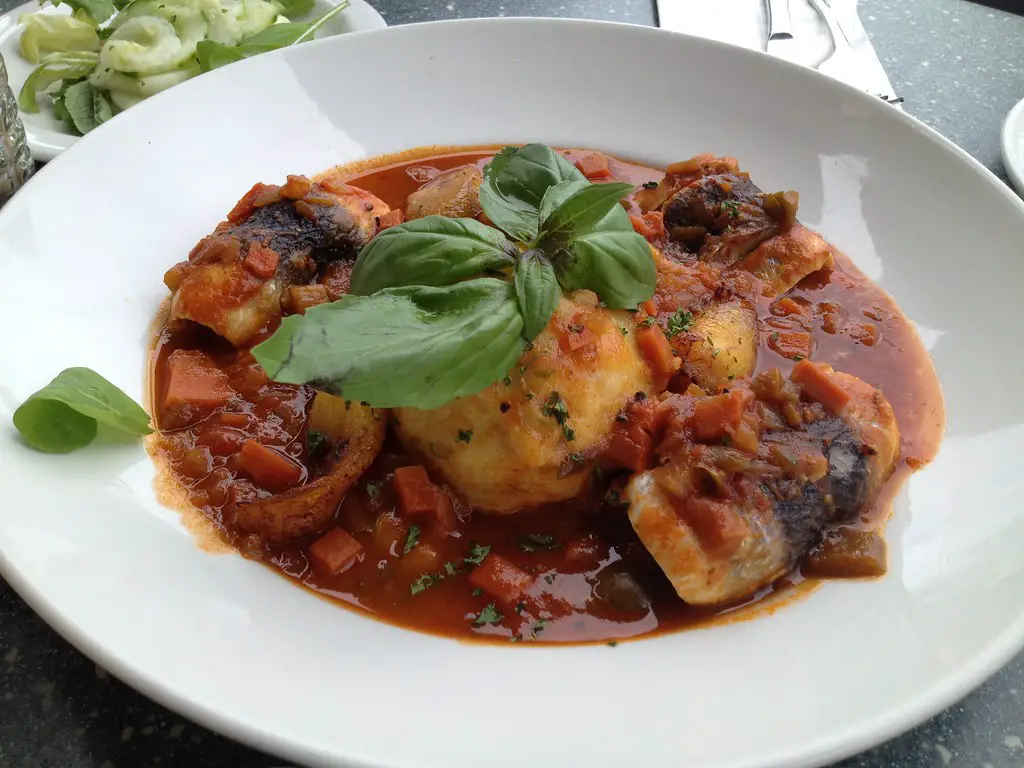When it comes to communal dining experiences, few can rival the sensory delight and social bonding offered by Chinese hot pot. A centuries-old tradition, hot pot has evolved into a beloved culinary practice worldwide. In this article, we’ll delve into the rich history and diverse variations of Chinese hot pot, explore the essential ingredients and equipment, and guide you through the steps of preparing your own mouthwatering hot pot feast.
A Brief History of Chinese Hot Pot
Hot pot’s roots can be traced back to ancient China, where it was known as “huoguo” (火锅), meaning “fire pot.” Historical records suggest that this culinary tradition dates back over a thousand years to the Tang Dynasty (618-907 AD). Back then, hot pot was a staple among the nomadic Mongolian tribes, who would cook thinly sliced meat over an open flame and dip it into boiling broth. Over time, hot pot spread throughout China and adopted regional flavors and ingredients, making it the diverse and beloved dish we know today.
The Fundamentals of Chinese Hot Pot
Ingredients
Broth:
The heart of hot pot lies in its simmering broth, which comes in various flavors. The two main categories are:
Clear Broth: Made with chicken or pork bones, it’s mild and serves as an excellent base for dipping delicate ingredients like seafood and tofu.
Spicy Broth: Known as “mala,” this fiery option is infused with Sichuan peppercorns and chili peppers, delivering a numbing and spicy kick.
Protein:
Hot pot offers an array of protein options, including thinly sliced beef, lamb, chicken, pork, seafood (shrimp, fish, and squid), and even exotic choices like tripe and organ meats.
Vegetables:
Fresh vegetables such as napa cabbage, mushrooms, spinach, and watercress complement the hot pot experience, adding texture and nutrition.
Tofu and Noodles:
Silken tofu and various types of noodles, such as glass noodles and udon, absorb the flavors of the broth and add substance to the meal.
Dipping Sauces:
Dipping sauces are an essential part of hot pot. Some popular options include soy sauce, sesame oil, garlic, cilantro, and chili oil. Customize your sauce to your liking!
Equipment
Hot Pot Pot: Traditional hot pots are usually divided into two compartments for both clear and spicy broths, allowing diners to enjoy a variety of flavors in one meal. Electric or gas hot pot cookers are also commonly used.
Skimmer or Ladle: To scoop out cooked ingredients from the hot pot.
Chopsticks or Strainers: To retrieve cooked ingredients and noodles from the broth.
Preparing the Broth
The key to a delicious hot pot is the flavorful broth that simmers away, infusing your ingredients with a burst of taste. Here’s how to prepare it:
Clear Broth:
In a large pot, add water, chicken or pork bones, ginger slices, and scallions.
Bring the mixture to a boil, then reduce the heat and simmer for 2-3 hours.
Skim off any impurities that rise to the surface.
Season the broth with salt or soy sauce to taste.
Spicy Broth (Mala):
In a separate pot, combine water, Sichuan peppercorns, dried chili peppers, ginger, and garlic.
Bring the mixture to a boil, then reduce the heat and simmer for about 30 minutes.
Strain out the solids, leaving a fragrant and spicy broth.
Preparing Ingredients
Before diving into the hot pot experience, ensure all your ingredients are ready for cooking. Thinly slice meat, chop vegetables, and prepare your tofu and noodles. Place them on separate platters for easy access.
The Art of Cooking
Cooking Times:
Different ingredients require varying cooking times. Thinly sliced meat may take mere seconds to cook, while vegetables and noodles might take a few minutes. Seafood generally cooks quickly, so be attentive to avoid overcooking.
Dipping and Cooking:
Using your chopsticks or strainer, dip ingredients into the hot pot broth. Swirl them around until cooked to your preferred level of doneness. Remember, hot pot is interactive and encourages socializing, so enjoy the process!
Dipping Sauces
Dipping sauces are where you can get creative and tailor your hot pot experience to your taste. Here are some popular dipping sauce combinations:
Classic Sesame Sauce:
Mix soy sauce, sesame oil, minced garlic, and finely chopped scallions. Add a pinch of sugar for balance.
Spicy Sichuan Sauce:
Combine soy sauce, black vinegar, minced garlic, chili oil, and Sichuan peppercorns. Adjust the spice level to your preference.
Peanut Dipping Sauce:
Mix peanut butter, soy sauce, sugar, and a splash of hot water until smooth. Add chili oil for an extra kick.
Tips for a Perfect Hot Pot Experience
Gather a group of friends or family to enjoy hot pot together. It’s a communal and interactive dining experience that encourages bonding.
Balance flavors in your hot pot by alternating between the clear and spicy broths. This keeps your palate refreshed and prevents palate fatigue from the spiciness.
Be cautious when handling spicy ingredients, especially Sichuan peppercorns. They can numb your mouth, so use them sparingly if you’re not accustomed to their intensity.
Don’t overcrowd the hot pot. Cook ingredients in small batches to ensure they cook evenly.
Save the best for last. As the broth becomes more infused with flavors from the ingredients, it can make for a fantastic end-of-meal soup.
Regional Variations
Chinese hot pot boasts a diverse range of regional variations, each with its own unique twist. Some of the most famous include:
Sichuan Hot Pot:
Known for its fiery mala broth, Sichuan hot pot incorporates bold flavors like Sichuan peppercorns, chili peppers, and a variety of meats and vegetables.
Chongqing Hot Pot:
A subset of Sichuan hot pot, Chongqing hot pot is even spicier and often features a distinctive red broth.
Cantonese Hot Pot:
Characterized by its clear and mild broth, Cantonese hot pot highlights fresh seafood and delicate ingredients.
Beijing Lamb Hot Pot:
A winter favorite, this hot pot features thinly sliced lamb cooked in a hearty broth.
Chinese hot pot is more than just a meal; it’s an immersive culinary experience that brings people together around a bubbling cauldron of deliciousness. Whether you’re drawn to the fiery intensity of Sichuan hot pot or prefer the subtle flavors of a Cantonese variation, there’s a hot pot style to suit every palate. So, gather your friends and family, prepare your ingredients, and embark on a flavorful journey through the world of Chinese hot pot. Your taste buds and your social bonds will thank you for it.
Health Benefits of Chinese Hot Pot
Beyond its delectable flavors and communal appeal, Chinese hot pot also offers several health benefits:
Nutrient-Rich Ingredients: Hot pot typically includes a wide variety of fresh vegetables, lean meats, and seafood, providing a balanced meal rich in vitamins, minerals, and protein.
Low in Fat: Depending on your ingredient choices and portion control, hot pot can be a relatively low-fat dining option, especially when compared to fried or heavily processed foods.
Digestive Benefits: The warm broth in hot pot can aid in digestion and soothe the stomach, making it an ideal choice during colder months or when feeling under the weather.
Customizable: Hot pot allows diners to tailor their meal to their dietary preferences and restrictions, whether you’re vegetarian, pescatarian, or looking for low-carb options.
Hydration: The broth in hot pot helps keep you hydrated, particularly important if you’re enjoying the meal on a chilly day.
Popular Hot Pot Ingredients
To further enhance your hot pot experience, consider including some popular and unique ingredients:
Enoki Mushrooms: These delicate mushrooms absorb the broth’s flavors beautifully.
Fish Balls: Add a delightful seafood twist with fish balls filled with savory surprises.
Quail Eggs: These tiny eggs offer a delightful contrast in texture and flavor.
Taro Slices: Taro has a creamy texture when cooked and pairs well with various broths.
Cheese Fondue: For a fusion twist, consider incorporating a cheese fondue hot pot with a blend of melted cheese and broth.
Hot Pot Etiquette
To fully enjoy your hot pot experience, it’s essential to observe some basic etiquette:
Sharing is Caring: Hot pot is a communal meal, so be sure to share the ingredients and keep an eye on the cooking time to avoid overcooking.
Respect Others: Don’t “hog” the ingredients or dominate the cooking process. Be considerate of everyone’s preferences.
Hygiene: Use separate utensils for handling raw and cooked ingredients. Avoid double-dipping and maintain cleanliness throughout the meal.
Mind the Broth: Refill the broth as needed to ensure it doesn’t boil dry, scorch, or become too diluted.
Enjoy the Process: Hot pot is not just about eating; it’s about savoring the cooking process, sharing stories, and connecting with your dining companions.
Hot Pot at Home
While hot pot restaurants offer an authentic experience, you can also enjoy this delicious meal at home. Simply gather the necessary ingredients and equipment, prepare the broth, and let your guests create their custom hot pot experience.
Here are some tips for hosting a hot pot party at home:
Prepare Ahead: Slice and prepare all the ingredients in advance to minimize preparation time during the meal.
Set the Stage: Arrange the ingredients, sauces, and utensils in a way that allows easy access for everyone.
Offer Variety: Provide a diverse selection of proteins, vegetables, and sauces to cater to different tastes.
Safety First: Ensure the hot pot cooker is placed on a stable surface, away from flammable materials, and that everyone knows how to use it safely.
Enjoy the Experience: Relax, enjoy the process, and engage in lively conversations as you cook and dine together.
Chinese hot pot is more than just a meal; it’s a sensory journey that combines flavors, aromas, and social connection. From its rich history to its diverse regional variations, hot pot showcases the beauty of Chinese cuisine. Whether you choose the numbing heat of Sichuan mala or the comforting warmth of a Cantonese broth, hot pot is a culinary adventure that promises unforgettable moments with friends and family. So, gather your loved ones, prepare your ingredients, and embark on a hot pot experience that will leave you savoring the memories for years to come.


















